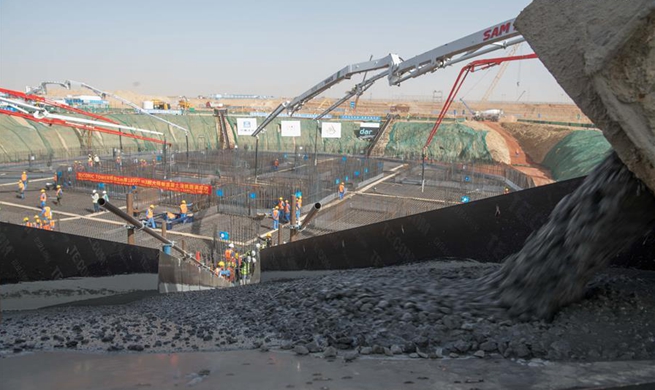SYDNEY, Feb. 26 (Xinhua) -- The ancient Cambodian city of Angkor may not have come to such a sudden and catastrophic end as previously believed, with new Australian research released on Tuesday showing a more gradual decline leading up to the desertion of the city in 1431 AD.
Now one of the country's most popular tourists attractions, Angkor was formerly the capital city of the Khmer Empire.
Known for its irrigation moats and intricately decorated stone walls and temples, the city is said to have housed at least 0.1 percent of the world's population between 1010 and 1220.
However in 1431 AD, Angkor was sacked by raiders from outside, bringing the city's period of vibrant occupation to an end.
There has been much debate amongst scientists and historians as to what preceded the sacking of the city, with some even suggesting an outbreak of disease or earthquake made it vulnerable to attack.
However, by examining sediment drill cores from the moat surrounding Angkor Thom, a team from Australia's University of Sydney (UOS) have shown that Angkor underwent a slow decline over a period of about 100 years.
"Changes in land use leave tell-tale traces in sedimentary deposits that can be measured," study co-author Associate Professor Dan Penny from UOS said.
"Measuring these traces in drill-cores allows us to reconstruct what people were doing in the landscape over long periods of time."
The study shows evidence that forest disturbance, soil erosion and burning all declined in the first decades of the 14th century, and that by the end of the period the moat was covered in floating vegetation, suggesting it was no longer being maintained.
"Our study suggests the inhabitants didn't leave Angkor because the infrastructure failed, rather the infrastructure failed (or was not maintained or repaired) because the urban elite had already left," Penny said.
While the true reason for the city's decline may remain hidden, the team's results cast a different light, and creates new questions about one of the world's greatest civilizations.













